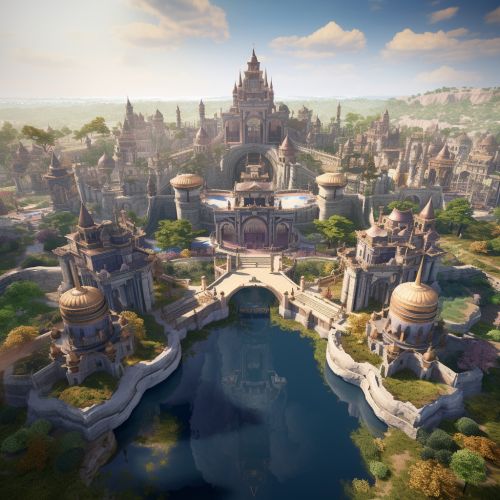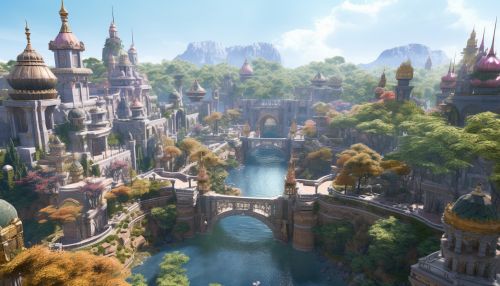Tenochtitlan
History
Tenochtitlan, the ancient capital of the Aztec Empire, was founded in 1325 and located in what is now the center of Mexico City. The city was built on an island in Lake Texcoco, a natural lake within the Valley of Mexico. The Aztecs, also known as the Mexica, believed that their patron god, Huitzilopochtli, had instructed them to build their home on the spot where they saw an eagle perched on a cactus, devouring a snake. This vision fulfilled a prophecy, leading to the establishment of Tenochtitlan.


The city was divided into four zones, or campan (districts), each presided over by a tlatoani (ruler). Each campan was further divided into 20 calpulli (big houses), which were essentially clans of families who lived together, worked the same land, and worshipped at the same temples.
Architecture and Urban Planning
The architecture of Tenochtitlan was a testament to the Aztecs' engineering skills. The city was crisscrossed by canals, which were used for transportation, and had numerous bridges that could be removed for defensive purposes. The city was designed around a central plaza, with the Templo Mayor at its heart. This grand temple, dedicated to the gods Huitzilopochtli and Tlaloc, was a double pyramid with two temples at the top.
The city also had a complex system of aqueducts that brought fresh water from the mainland. The Aztecs also built a dike around the city to prevent flooding, a common problem in the lake-filled valley.
Economy
The economy of Tenochtitlan was based on agriculture and trade. The Aztecs used a system of agriculture known as chinampas, or "floating gardens," which were small, rectangular areas of fertile arable land created on the shallow lake beds. They grew a variety of crops, including maize, beans, squash, tomatoes, and chili peppers.
Trade was also a crucial part of the city's economy. Tenochtitlan was a hub for a vast trading network that extended throughout Mesoamerica. Goods such as cotton, cacao, obsidian, and feathers were traded in the city's tianquiztli (marketplaces), the largest of which was the Tlatelolco market.
Society and Culture
Aztec society was highly structured, with a clear distinction between nobles (pipiltin) and commoners (macehualtin). The emperor, or Huey Tlatoani, was the highest authority, followed by nobles, warriors, merchants, and artisans. Slaves (tlacotin) were at the bottom of the social hierarchy.
The Aztecs had a rich and complex mythology and religious tradition. They worshipped a pantheon of gods, with Huitzilopochtli, the god of the sun and war, being the most revered. Human sacrifice was a central part of their religious practices, believed to appease the gods and ensure the continuation of the world.
Education was highly valued in Aztec society. There were two types of schools: the telpochcalli, for practical and military training, and the calmecac, for learning about writing, astronomy, theology, and other scholarly pursuits.
Fall of Tenochtitlan
The fall of Tenochtitlan in 1521 marked the end of the Aztec Empire. Spanish conquistador Hernán Cortés, with the help of native allies, laid siege to the city. After a brutal battle, the city fell to the Spanish, who subsequently razed it and built Mexico City on its ruins.
Legacy
The legacy of Tenochtitlan lives on in the culture, history, and geography of modern Mexico. The city's ruins, including the Templo Mayor, are major archaeological sites. The symbol of the eagle on a cactus, from the Aztec foundation myth, is featured on the Mexican flag.
